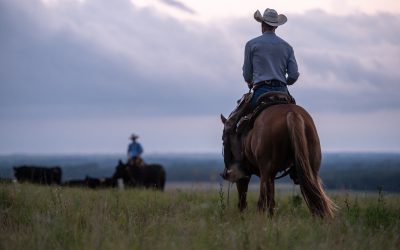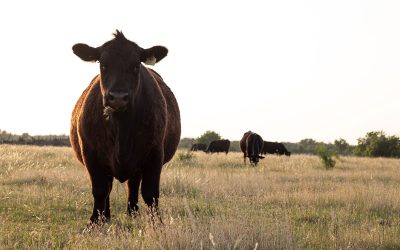
ID is the key
May 3, 2011
I had interviewed the Fleenors by phone on a few different occasions but as Laura and I sat across the kitchen table from Mason and Diane a few years ago, I was struck by some in-person observations. Their house and appearances weren’t pretentious—in fact, they reminded me of sitting around chatting with my family after morning chores–but they had data that would blow the mind of sophisticated folks on Wall Street. And they use it.
Just imagine if every publicly traded company had individual data on every single product that left its factory, including who made it, how different suppliers changed outcomes, etc., and they shared that with those they bought raw materials from.
Sure, the Fleenors operate GG Genetics, so as seedstock producers some commercial folks would argue that it’s their job to keep more information than average, but they started out as feeders in the ’80s. Then that data tracking led to their wanting to change what type of cattle they were procuring. That inspired them to get into the beginning stages. Now they use that full circle of data collection to help everybody they do business with.
Their system starts with only selling breeding stock that’s backed by data, selected for carcass. Mason says he doesn’t care if somebody calls his bulls ugly: “I don’t like the looks of what some other bulls produce, so I guess we’re even. You eat yours, and I’ll eat mine.”
Then they purchase customer calves to feed and collect individual data on them. (When we visited in ’09, they were sitting at 74.6% Certified Angus Beef & CAB Prime.) They share both the data and the ability to hit the target.
One customer says, “After he’s fed them and we’ve gotten the printout on the cattle and see how well they graded, we go from there to start eliminating cows whose calves didn’t make the good carcass.”
A few years ago they traced one supplier’s YG4 challenges to one cow family. They figured the YG discounts and the number of progeny that cow would have and decided it easily could have cost them $2,000 over its lifetime. When the customer didn’t make a change, they got frank: “We told him, we’ll buy all your calves, but we don’t want those two. You take their calves somewhere else,” Diane says.
Of course this whole system only works when producers keep records that are tied back to individual identification. I’m always amazed at how many folks don’t do this. As you’re branding or giving preweaning shots, maybe you could break tradition and add some ear tags. What would you use that information for?
If you already individually ID, why do you do it? How do you use that knowledge in your business?
Need an added incentive to share your knowledge? One lucky producer will win 50 XLarge visual tags and a tagger! Just comment below and we’ll randomly draw the winner at the end of this month. We hope there are lots of comments! Thanks to The Tag Store, run by our friends at the American Angus Association, for offering this giveaway in exchange for your input.
May your bottom line be filled with black ink,
~Miranda
You may also like
Progress from small steps
Every day is a chance to learn and get better. Thousands of others like my new friends in Alabama are taking steps to meet the shifts in consumer demand, and to know more. Small steps in the right direction can start now. Even if it’s just recording a snapshot of where you are today, a benchmark for tomorrow.
Not perfect, but working to get better
The CAB Cattleman Connection team heard its name called more than once in the virtual ceremonies, and each time came a sense of personal accomplishment, but even better: confirmation that we’re getting better at our craft. I hope that means we’re doing a better job for you.
Beefed up findings
Frank Mitloehner presents his findings on the animal ag sector’s impact on global warming. He explains how cattle counterbalance other fossil fuel sectors, proving that cattle are a solution and not a threat.



